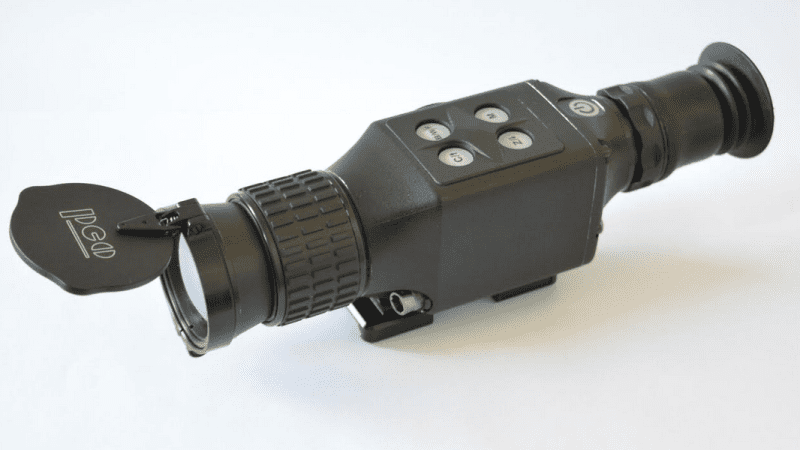PCO S.A Presents the Successor of the SCT Rubin Thermal Vision Firearm Optic During the MSPO 2016 Defence Salon

PCO S.A, during the MSPO 2016 defence expo, presents the SCT-2 thermal vision sight, which is a successor for the SCT Rubin scope, currently being used by the front-line units of the Polish Army.
SCT-2 thermal vision firearm optic is a successor of the SCT Rubin scope, manufactured by the PCO S.A company and used by the Polish Armed Forces. However, the SCT-2 sight is a brand-new design. During the development works, experiences gathered by the PCO company when designing the thermal vision sights for the Polish Army were used and put into practice. The new scope, as compared to its predecessor, is lighter, has better functionality and ergonomics.
SCT-2 is based on a modern, non-cooled microbolometric detector, offering a resolution of 640×480 pixels, operating within the spectrum scope between 8 and 14 μm. A wider field of view – 12×9 degrees for SCT-2, and two and four times electronic zoom, make observation and aiming easier.
SCT-2 firearm optic may be used within a temperature range from -30 to 60 degrees Celsius. SCT-2 scope’s weight is more than 30% lower than in case of the SCT Rubin sight – it is as little as 900 grams.
The scope is being controlled with a keyboard placed on its housing and a graphic user interface projected onto the thermal vision imagery presented by the sight. There is an option of controlling the sight with the use of an external interface. Moreover, the user may capture up to 30 images which may then be quickly transferred onto a computer through a USB connector. Video imagery is transferred to an external helmet-mounted screen with the use of a modern FPD Link III digital interface.
SCT-2 scope is to be primarily used for observation, aiming and firing purposes, once it is mounted onto a firearm, at night and during the day, in any weather and climatic conditions. The mount makes it possible to install the optic on any weapon fitted with a rail compliant with the STANAG 4694 or MIL-STD 1913 Picatinny standards. SCT-2 may be used with the standard weaponry operated by the Polish Army, including Beryl, Mini-Beryl and MSBS firearms.
The external helmet mounted display makes it possible to carry out observation and fire a weapon when hidden, e.g. behind a corner.
Once it is removed from the weapon, the sight may be used for observation as a hand-held thermal vision device for the element commanders, members of the recon teams or observers. In such application the SCT-2 sight may be coupled with a laser rangefinder or a GPS module.
SCT-2 makes it possible to detect a standard NATO target (2.3x2.3 meters) at distances of 3.2 kilometres. The sight has been additionally fitted with a distance ballistic compensation system which automatically moves the cross-hair, once the desired distance to the target is entered by the shooter. The ballistic adjustments are user-configurable, while the cross-hair’s position may be adjusted when aiming.
SCT-2 is powered by four batteries or AA/CR123 rechargeable cells. When compared to the SCT RUBIN sight, we may note that less batteries are required to power the newly designed instrument, with time of operation being maintained.
The SCT-2 sight has been created with the use of experience gathered by the PCO S.A company in the process of designing, developing and manufacturing thermal vision sights and with the use of experience acquired when the said devices were being introduced into use and operated by the front-line units of the Polish Army. The changes applied, constituting a response to the technological advancement concerning the components of the thermal vision observation systems, and to the needs reported by the Polish Army, made it possible to enhance the quality of observation and ergonomics of the said thermal-vision device.
SCT-2 sight is offered to the Armed Forces, with both the operational units, as well as the territorial defence component in mind.

WIDEO: Defence24 Days 2025: Premier Defence & Security Conference in CEE